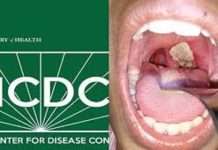“More objects are becoming embedded with sensors and gaining the ability to communicate. The resulting information networks promise to create new business models, improve business processes, and reduce costs and risks” Mckinsey – Internet of Things (2010)

The Internet of Things (IoT) refers to the networking of physical objects through the use of embedded sensors, actuators, and other devices that can collect or transmit information about the objects. Advances in wireless networking technology have made it possible to collect data from these sensors almost anywhere at any time. The information collected from these smart devices can then be analysed to optimise products, services, and operations.
In recent years, we see an increasing use of IoT in the pharmaceutical and health care industries. Pill-shaped microcameras – “chip in a pill”, a special ingestible pill – have been developed to traverse the human digestive tract, capturing the health status, as well as drug effects on key organs, and transmit the data to a wearable device. This data is then sent as a report over cloud to health care personnel (HCP) for diagnosis. The information obtained can enable HCPs to prescribe personalised medicines that will improve drug efficacy considerably and reduce treatment period.
The Internet of Things is also applied in helping people keep track of their medications at home through smart devices used as personal medication assistant. An example is Amiko which aims to inform, alert and remind people with asthma (patient) to take the right dosage of medication and alerts them should the medication run low.
IoT is transforming the Healthcare industry. Use of smart devices in clinical development and supply chain has helped in many aspects such as manufacturing and supply chain management, higher R & D productivity, improved pharmacovigilance and regulatory compliance adherence.
Scope of application
- Research and development
IoT applications such as “’Organ in a Chip” can drastically improve R&D productivity through rapid trials running multi-stage diagnostics as noted by Akash Shrivastava, a lead consultant with life sciences. During drug development and clinical trials, smart reporting and advance analytical tools will help generate vital diagnostics, enabling real-time reporting as there will be no need for continual feedback by subjects. This will reduce data reporting cost.
- Reduce time-to-market for new drugs
IoT application can enable pharma companies to plan better with faster decision making using real-time information obtained from smart systems integrated across the pharmaceutical value chain components. The insights acquired during drug research, efficacy, adoption, patient outcomes will be valuable to leadership and marketing teams especially during drug launch, drug pricing, and drug marketing and related strategy development.
- Regulatory compliance adherence
IoT application will enable real-time data reporting to central systems through the use of smart devices. This will help improve pharmacovigilance and adverse effect rate can be minimised using the vital diagnostics collected from patients, thereby improving drug quality in terms of safety.

References:
- Shrivastava A. (2015) “NextGen Pharma takes smart strides with Internet of Things” Wipro Ltd, Doddakannelli, Sarjapur Road, Bangalore – 560 035, India. http://www.wipro.com/documents/nextgen-pharma-takes-smart-strides-with-internet-of-things.pdf
- Chui M., Löffler M., and Roberts R. (2010) “The Internet of Things”. McKinsey Quarterly.
- Christopher Colucci (2015) “Internet of Things in Pharma & Healthcare” https://www.linkedin.com/pulse/internet-things-pharma-healthcare-industry-christopher-colucci.












buying tadalafil online safely – tadstrong.com tadalafil price